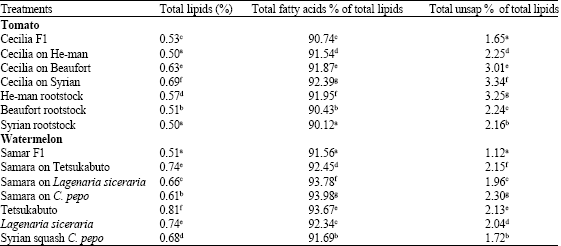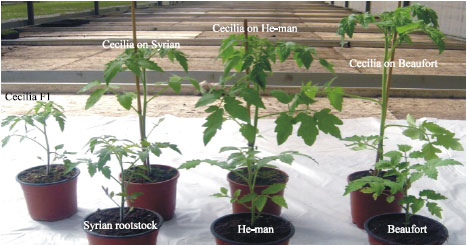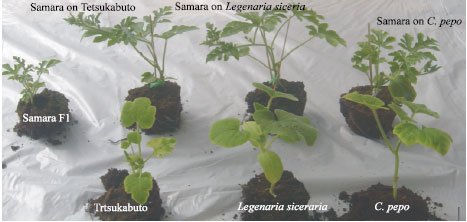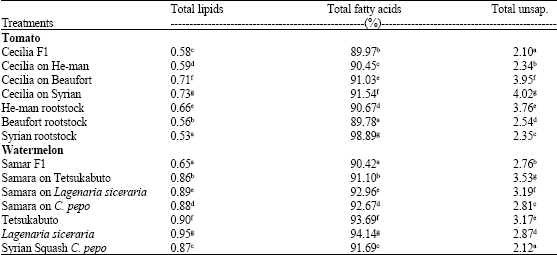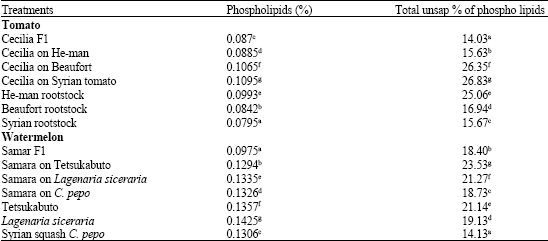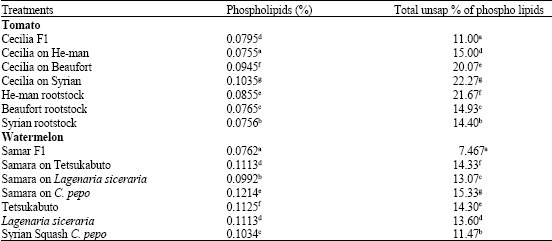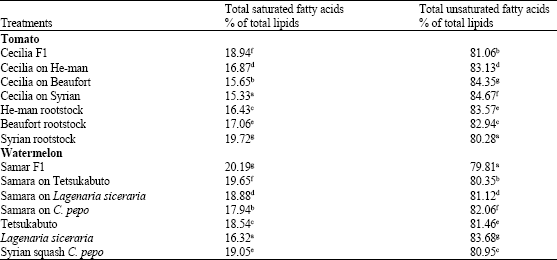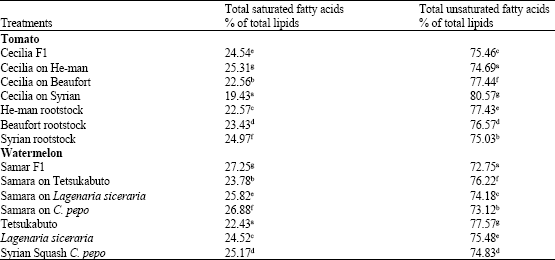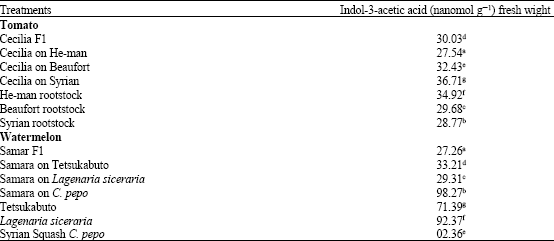Research Article
The Role of Grafting Tomato and Watermelon on Different Rootstocks on Their Chemical Contents
Department of Horticulture, Faculty of Agriculture, Tishreen University, Latakia, Syria
M. Humidan
Department of Horticulture, Faculty of Agriculture, Tishreen University, Latakia, Syria
M. Boras
Department of Horticulture, Faculty of Agriculture, Tishreen University, Latakia, Syria
O. A. Abdalla
Department of Plant Protection, College of Food and Agricultural Sciences, King Saud University, Riyadh, Saudi Arabia









